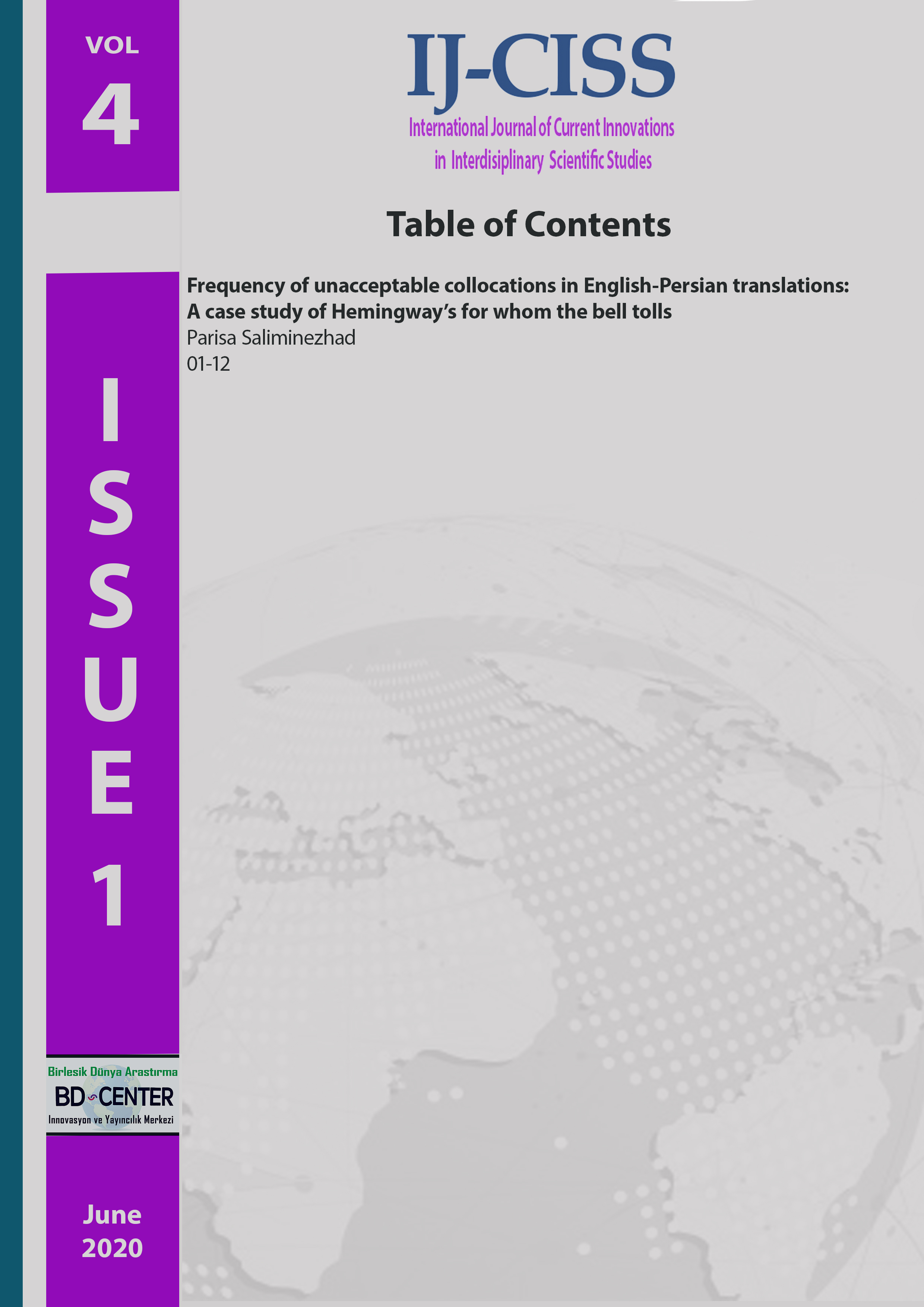Frequency of unacceptable collocations in English-Persian translations: A case study of Hemingway’s for whom the bell tolls
Main Article Content
Abstract
Collocations are clusters of words that are acquired together and are subject to constraints in co-occurrence with their adjacent words. Inadequate knowledge of collocations emerges into the formation of unacceptable collocations from the viewpoint of native speakers. The present study was an endeavour to identify the most frequent types of unacceptable collocations in the Persian translated versions of Hemingway’s “For Whom the Bell Tolls”. This is the first time the Persian translation of this book is being analyzed. To this end, the four Persian translated versions of the aforementioned novel were investigated precisely. Moreover, all the unacceptable collocations were compiled and clustered into English patterns based on Benson’s classification theory, in an aim to decode the groups of patterns which are most frequently leading to the bearing of unacceptable collocations in the translation of English texts to Persian. A detailed SPSS analysis was conducted and the findings including the frequency and percentage of each type of unacceptable collocations were reported. The most frequent types of unacceptable collocations spotted in the translated versions of the novel incorporated were as follows: 1. Adjective + Noun 23.3%, 2. Subject + Verb 11%, 3. Verb + Object 10.3% patterns. The research makes recommendations to researchers at the end of the study.
Keywords: Benson’s Classification Theory, Collocations, Literary Translation;
Downloads
Article Details

This work is licensed under a Creative Commons Attribution 4.0 International License.

